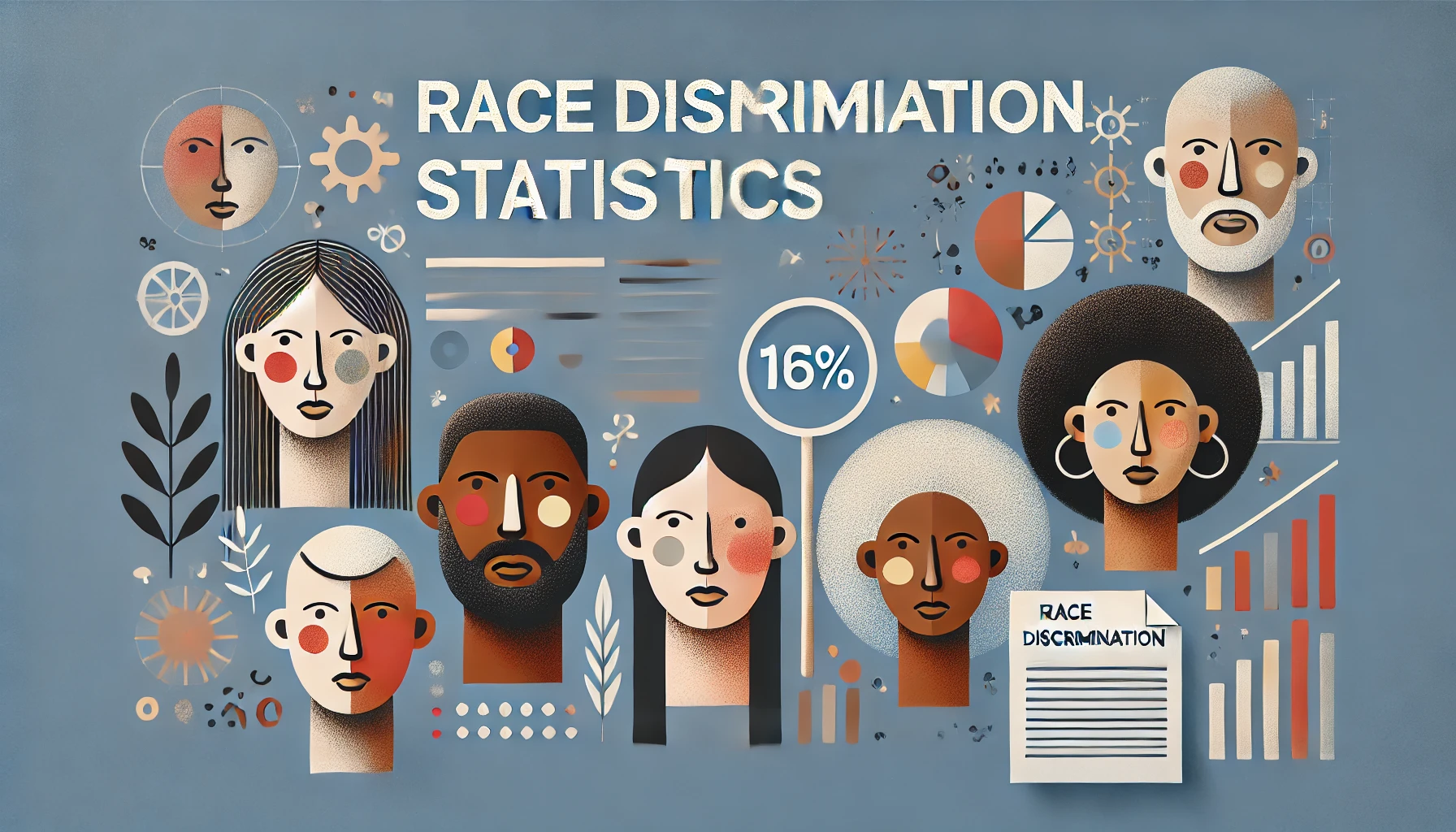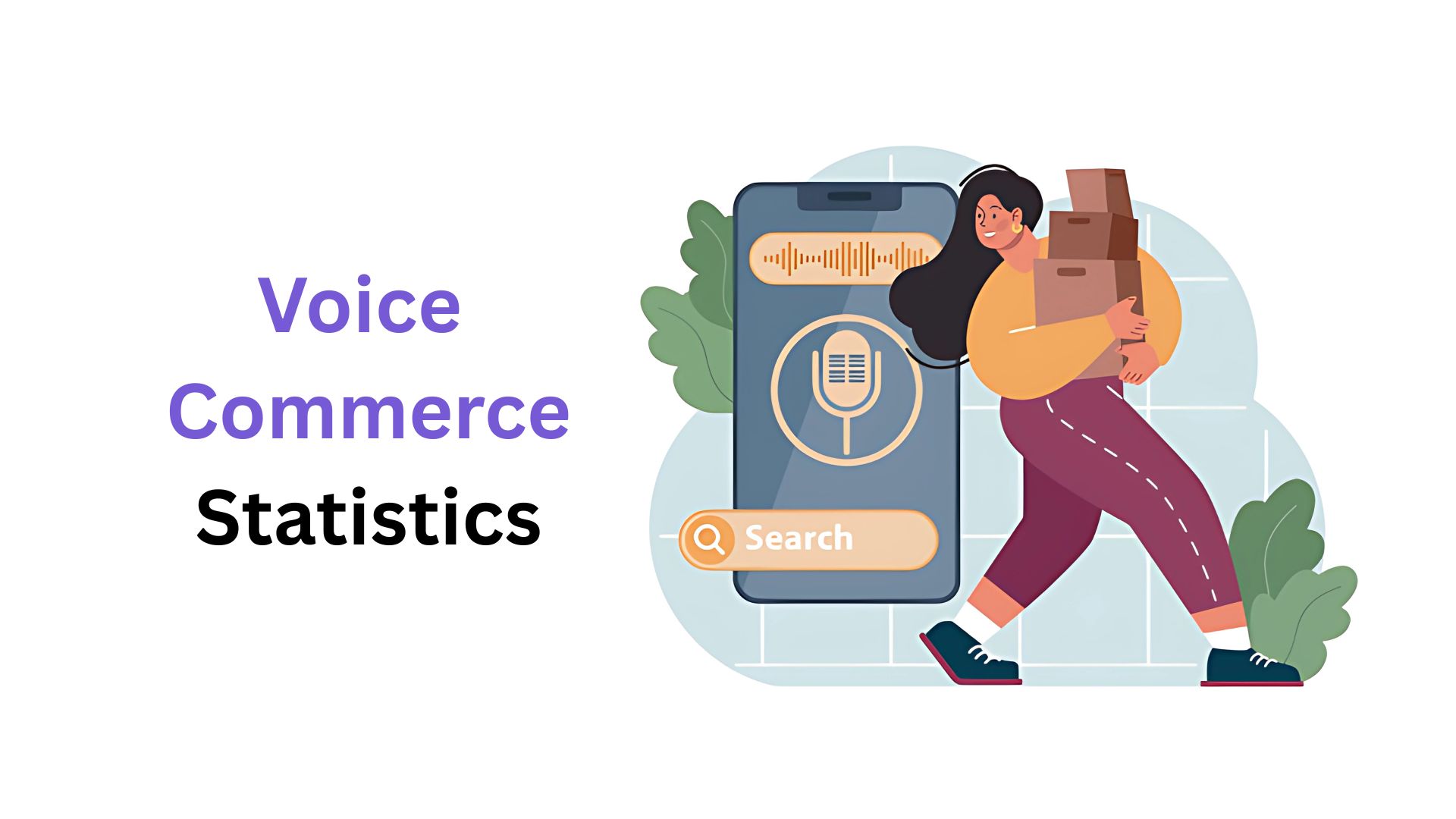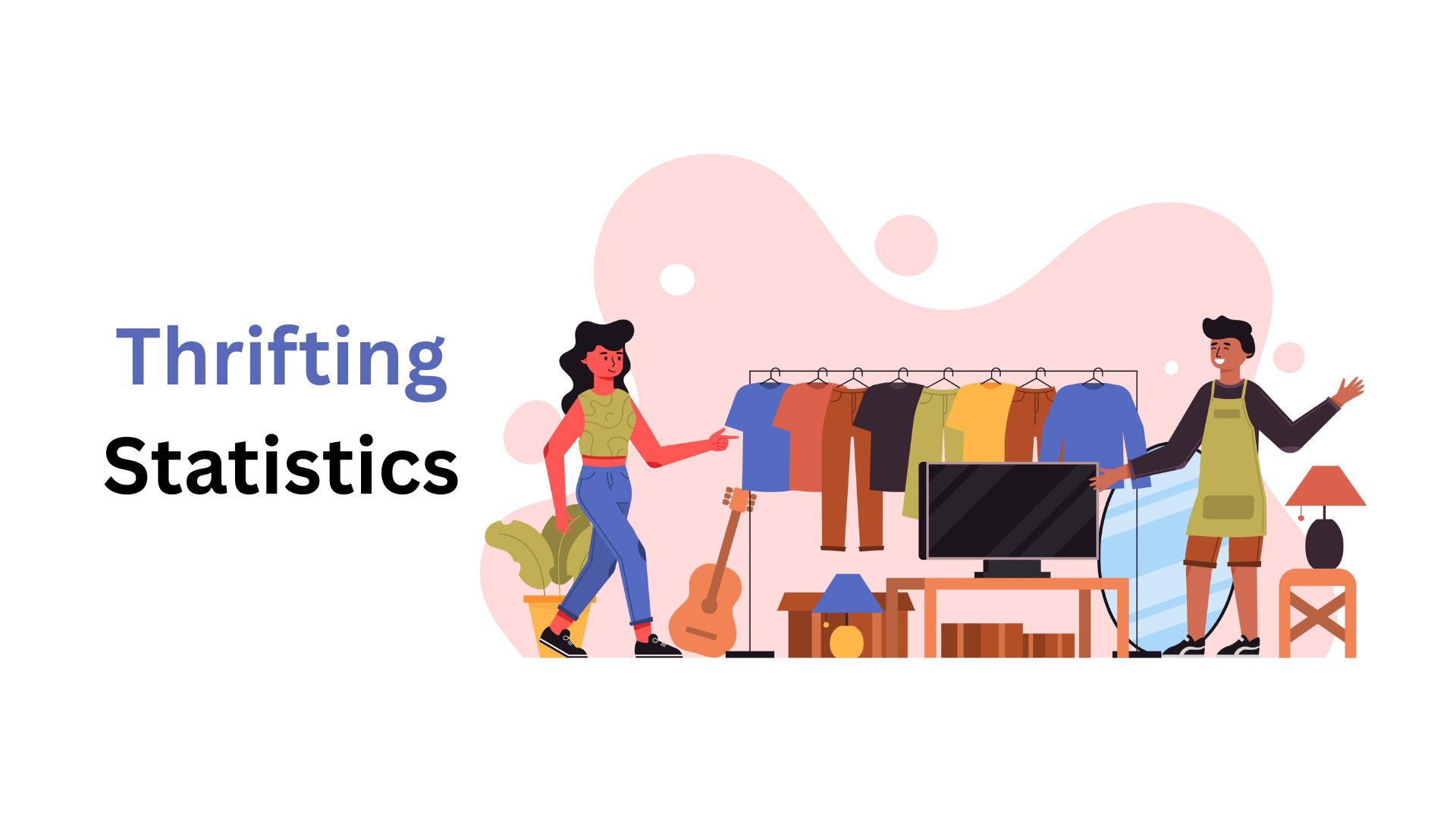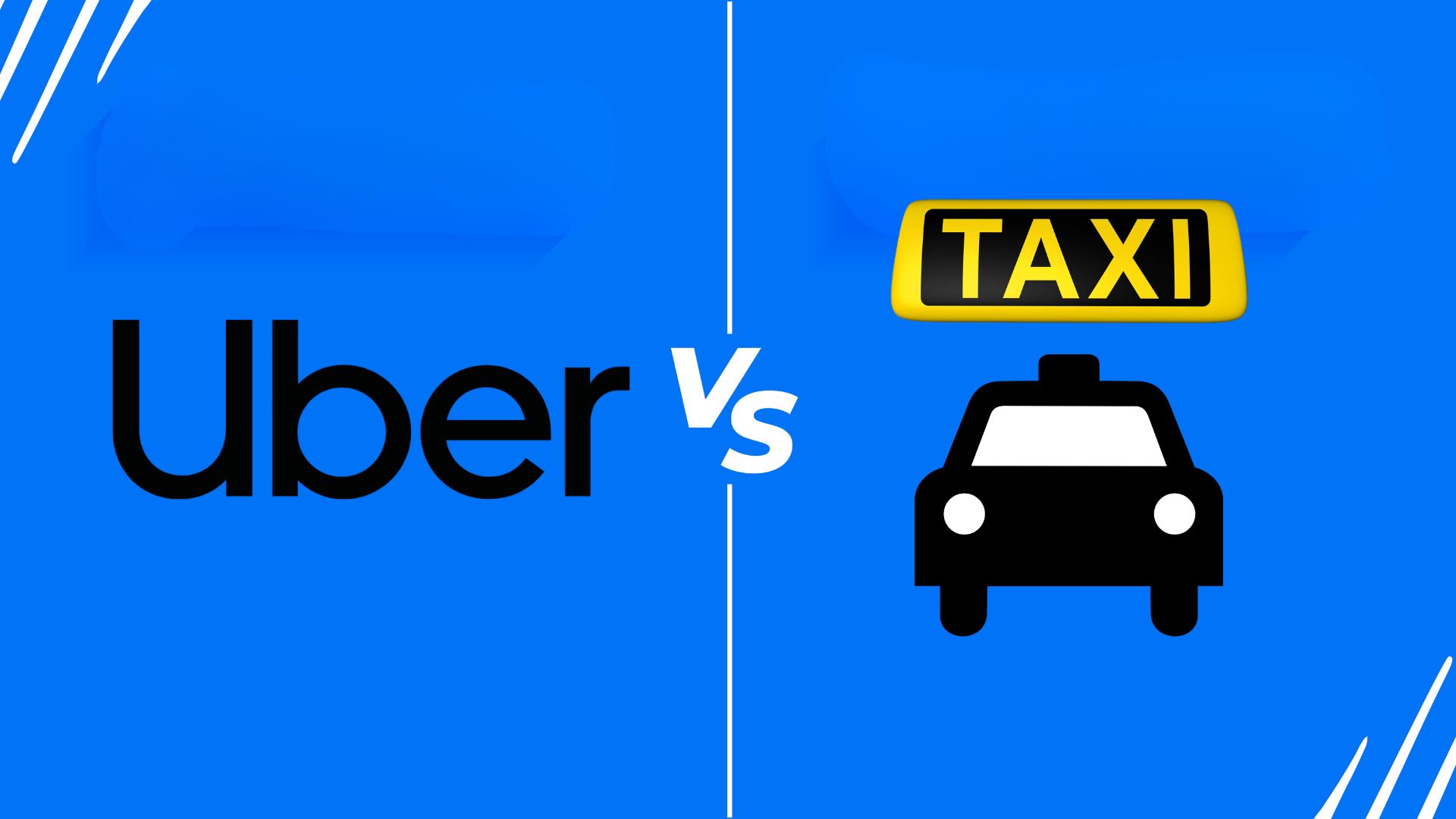Race Discrimination Statistics and Facts 2024
Updated · Aug 07, 2024

Table of Contents
- Introduction
- Editor’s Choice
- Latest Race Discrimination Statistics
- Race Discrimination In The United States
- Racial Discrimination in the Criminal Legal System
- Race Discrimination Statistics in Canada
- Spotlight on Racial Discrimination At Work in New Zealand
- Racial Injustice in the Criminal Legal System
- Europe-Based Race Discrimination
- To Effectively Combat Racism and Discrimination, FRA Recommends That EU Countries:
- Conclusion
Introduction
Race discrimination statistics: Race discrimination is a process by which policies, systems, actions, and attitudes create inequitable opportunities and results for people based on their race. Racism is mostly just a thought or action. Racism adapts as time passes and can also impact various communities in different ways, with racism towards other groups. Racism also exists in systems and organizations that operate in ways that lead to injustice and inequality.
Race discrimination is also observed in the workplace based on race, gender, color, sexual orientation, and other aspects. Anti-discrimination laws or companies should implement measures to prevent such toxic practices. We shall shed more light on Race discrimination statistics through this article.
Editor’s Choice
- In most countries, the income of 40% of the low-class population has been increasing faster than the national average.
- About 14% of working-age people are ethnic minorities, but they make up just 1.5% of leadership roles in UK companies.
- In 2022, the highest number of refugees (34.6 million population) were documented.
- Even though Black United States citizens and white United States citizens use drugs at the same rate, Black Americans are seven times more likely to be arrested.
- Globally, one out of five people have experienced race discrimination in some form with the women and people with disabilities not proportionately affected.
- As per race discrimination statistics, it is found that job resumes with traditionally white-sounding names get 50% more callbacks than traditionally black-sounding names.
- In 2022, a deadly one for migrants with roughly 7,000 deaths recorded worldwide.
- In the United States, black employees are less likely than white employees to be employed in a workplace that is consistent with their level of education.
- According to the report of the World Justice Project Rule of Law Index, the world’s leading independent source of the rule, 70% of countries have seen race discrimination worsen between 2021 and 2022.
- Black women are four times more likely to face a pregnancy-related death than white women, even if they are equal in context to income or education.
- If a take on average, Black men get sentences that are 19.1% longer than those of white men if convicted for the same crime in the United States.
- As per the survey, black individuals are two times more likely to be unemployed than white employees, and also, the black employee earns nearly 25% less than their white colleagues.
- As per a survey done in the US, 15.8% of the students reported that they experienced bullying based on their race or harassment. Research has also found a noteworthy association between racial bullying and adverse mental and physical health in students.
- The most worsened cases of racial discrimination are Afghanistan (0.27), Sudan (0.31), and Nicaragua (0.36). The United States 0.48 and Hungary (0.41) are the high-income countries where discrimination is most common compared to other countries.
- The WJP Rule of Law Index is an in-depth survey of more than 154,000 households and almost 3,600 experts and legal practitioners all around the globe to evaluate people’s experiences and perceptions of the rule of law.
Latest Race Discrimination Statistics
- As compared to 3.4% of white adult males, the unemployment rate for black adult males in the United States was 6.5%.
- Black adults are five times as likely to say police have unfairly stopped them than white adults.
- 20% of the population with a difference in cultural background reported experiencing racial discrimination during employment interviews in Australia.
- Roughly 54% of the black population reported some form of racial discrimination in the last five years in Canada.
- In the United Kingdom, 35% of black and minority ethnic employees have been harassed on a race-discrimination basis or bullied at work.
- 33.6% of Native Americans report experiencing discrimination in only one state all across the United States.
- As per race discrimination statistics, about 40% of the school students in Europe who are of African descent have strongly experienced racial discrimination.
- Almost 50% of the black people in South Africa reported being a victim of racial discrimination.
- The LGBTQ+ population of color is two times as likely to feel racial discrimination from their white LGBTQ+ peers.
- Black workers in the United States face four times as unfair discipline at the workplace compared to white workers.
- Since the 9/11 attacks, 1 out of 3 U.S. Muslims have faced discrimination.
- 44% of the Asian population reported having experienced unfair treatment or faced discrimination due to their ethnicity in New Zealand.
- About 50% of African Americans and Latinos have experienced racial discrimination in the healthcare system.
- As per research, there is a massive gap of 26.5% between black and white workers in the United States, not only in numerical differences but also in entrenched, systemic issues deeply rooted in racial disparities.
- In the United States, 65% of Native American women have faced racial and gender discrimination.
- Almost 58% of American adults believe race discrimination is a central problem in the United States.
- Nearly 71% of the population from ethnic minorities in the United Kingdom have stated facing racial discrimination as compared to just 58%.
- Significantly, race influences mortgage lending decisions concerning black borrowers, with 105% more likely to have their applications rejected.
- Hispanics are almost 21% less likely to be hired for jobs than whites.
- 14% of working-age people are ethnic minorities, but they make up about 1.5% of leadership roles in companies in the United Kingdom.
Race Discrimination In The United States
Workplace
- Nearly 57% of black Americans have experienced discrimination in the pay level and the consideration for promotion.
- About 31% of all females say that they have been discriminated against when they apply for jobs because of their color and gender.
- The Native Americans that live in the majority Native areas are more than two times as likely as those living in non-majority native regions to say they have faced native differences in hiring, compensation, and promotions.
Harassment
- Nearly 51% of black Americans stated that they have faced people using racial slurs against them.
- Almost 60% of the females between 18 and 29 years state that they or a female family member have been sexually harassed.
- Roughly 35% of Asian Americans have stated that they have faced people making them feel insensitive or offended by their comments or with negative assumptions about their race.
Healthcare
- The 9% of white Americans who earn under $25,000 every year state that they have avoided medical care in concern that they would be racially discriminated against because of their race, and the 0% of white Americans making $75,000 annually.
- Nearly 22% of black Americans say that they have avoided taking medical care for themselves or their family member out of concern that they will be discriminated against as they are black.
- Almost 16% of the LGBTQ population stated that they are being personally discriminated against when they visit a doctor or a health care clinic because of their color.
Interacting with Police
- Almost 30% of the LGBTQ population of different colors say that they have avoided calling the police when they are in need, with a concern that they would be discriminated against because of their appearance.
- Nearly 60% of black Americans said that they or their family member had been unethically stopped or treated by the police as they were black.
- Non-immigrant Latinos are almost 36% the immigrant Latinos 19% say police have unethically stopped them or a family member.
Racial Discrimination in the Criminal Legal System
- The authorities in the United States hold almost 2 million people in detention and correctional facilities, and they imprison Black people three times more than white people.
- 50% of the people executed are Black, and 60% of the people sentenced to death were Black or Latinx in 2021.
- Black women are arrested at a rate that is 1.7 times that of white women.
- Nearly 1 out of 7 people in prison get a life sentence, and 50% of that group is Black.
- As per race discrimination statistics, 50% of the black population experience familial incarceration than the whites, and they are incredibly likely to have a family member incarcerated for a long year.
Race Discrimination Statistics in Canada
- As per the General Social Survey(GSS) on the safety of Canadians, almost 46% of the Black people between age 15 years and older have reported that they have felt at least one form of discrimination in past years as compared to 16% of non-indigenous people.
- Among all Black people, 41% have experienced differences based on their race and skin color and, almost 15 times higher than the proportion among non-indigenous people.
- As per the experiences of the discriminated, people were much more common among 65% of Canadian-born Black people than among 36% of Black immigrants.
- As per GSS, a high proportion of Black people have seen discrimination.
- 44% of First Nations people felt discriminated against in the five years preceding the survey, as did 24% of Metis and 29% of Inuit.
- Among the population facing race discrimination, 21% of the Indigenous people and 16% of the Black people said it was when dealing with police as compared with 4% of the non-Indigenous and minority people.
- Experiences based on discrimination were more common among Indigenous people.
- As per Statista Canada and Do 2020, the Black population in Canada is diverse and represents a population with different backgrounds, ethnicities, and circumstances.
- 51% of the Black people more often experience discrimination in a store, bank, or restaurant than did the non-Indigenous and non-visible minority population.
Spotlight on Racial Discrimination At Work in New Zealand
- Nearly 77,700 people, or almost 2.3% of the respondents, stated that they have experienced racial discrimination in employment situations.
- The rate of the population experiencing racial discrimination on the streets or in public places is almost 2.5% (nearly 85,200 New Zealanders).
- In the past 12 months, almost 64,100 respondents reported experiencing racial discrimination at work or while working.
- The statistical modeling that is based on the group of people shows that Māori, Pacific, and Asian populations are more likely to face racial discrimination in the workplace than the majority group.
- Migrants are more likely to face racial discrimination in the workplace than the non-migrants, i.e., the people born in New Zealand.
- Racial discrimination is not just associated with a person’s ethnic group but also if they are born in New Zealand.
- Population with formal qualifications, that is, secondary school or trade or university, are more prone to report racial discrimination at the workplace than those with no qualification.
Racial Injustice in the Criminal Legal System
- As per the Death Penalty Information Center, almost 185 people were exonerated from death 53% are Black.
- It takes longer to exonerate an innocent Black person
- Nearly 42% of the people on death row were Black, including Innocence Project clients as well, though Black people made up just 13% of the overall population of the United States in 2020.
- Since 1989, 50% of the 2,947 population exonerated are Black.
- More than 149 unarmed people were killed by police in 2017 and 49 were Black as per Mapping Police Violence.
- Noncriminal Black people are seven times more prone to be wrongly convicted of murder than the criminal white population.
- Black people are more likely to be stopped and enquired.
- Innocent Black people on death row spend almost 13.8 years wrongly arrested before being exonerated.
- Under Chicago Police Commander Jon Burge, police abused and tortured more than 100 Black men and women until many falsely confessed to crimes they did not commit.
Europe-Based Race Discrimination
FRA’s recent ‘Being Black in the EU’ report sheds light on the experiences of people of African descent in the European Union. Despite existing anti-discrimination laws and policy advancements since 2000, individuals of African descent still encounter racism, discrimination, and hate crimes.
Racial Discrimination:
- 45% of respondents reported experiencing racial discrimination in the five years leading up to the survey, marking an increase from 39% in the previous FRA survey. Notably, in Germany and Austria, this figure exceeds 70%.
- The primary areas of discrimination include job searches and accommodation.
- Young people and those with higher education levels are particularly affected. Shockingly, only 9% of those facing discrimination report it.
Harassment:
- 30% of respondents disclosed experiencing racist harassment, yet very few incidents are reported.
- Young women, individuals with higher education, and those wearing religious clothing are more likely targets of racial harassment.
Racial Profiling:
- 58% revealed that their most recent police stop in the year preceding the survey was a result of racial profiling.
- Those perceiving their stops as racially motivated express lower trust in the police.
Workplace Discrimination:
- 34% felt racially discriminated against while job hunting and 31% experienced discrimination at work in the five years before the survey.
- Compared to the general population, they are more likely to hold temporary contracts and be overqualified.
Housing and Poverty:
- Due to rising inflation and living costs, more people of African descent face a higher risk of poverty compared to the general population.
- About 33% struggle to make ends meet and 14% cannot afford to heat their homes adequately. Finding accommodation is a challenge for 31%, who report racial discrimination in the process.
Education:
- Young individuals of African descent are three times more likely to drop out of school early compared to their peers.
- Parents in 2022 report an increase in racism experienced by their children at school compared to 2016.
To Effectively Combat Racism and Discrimination, FRA Recommends That EU Countries:
- Enforce anti-discrimination laws rigorously, with proportional and deterrent sanctions.
- Identify and document hate crimes, considering bias motivation as an aggravating factor in penalty determination.
- Gather equality data, including information on ‘ethnic or racial origin,’ to assess situations and monitor progress.
- Ensure that equality bodies have the necessary authority and resources to address discrimination and support victims.
- Take measures to prevent and eliminate discriminatory institutional practices and cultures in policing.
- Develop policies addressing racism and racial discrimination in education, employment, housing, and healthcare.
Conclusion
Racial discrimination affects 90% of black adolescents, social psychology, and also academic well-being. This leads to increased stress, lowered self-esteem, and decreased academic performance. Race discrimination should be stopped as it can ruin a community and, finally, humanity. This is an unfair or prejudicial treatment of people and groups based on characteristics like gender, race, color, and sexual orientation.
The above Race Discrimination Statistics have shed light on the causes and treatments of racial discrimination. NAACP is a leading act in fighting the end of racial inequality. Equality should be equal for every one of us.

Joseph D'Souza founded ElectroIQ in 2010 as a personal project to share his insights and experiences with tech gadgets. Over time, it has grown into a well-regarded tech blog, known for its in-depth technology trends, smartphone reviews and app-related statistics.










